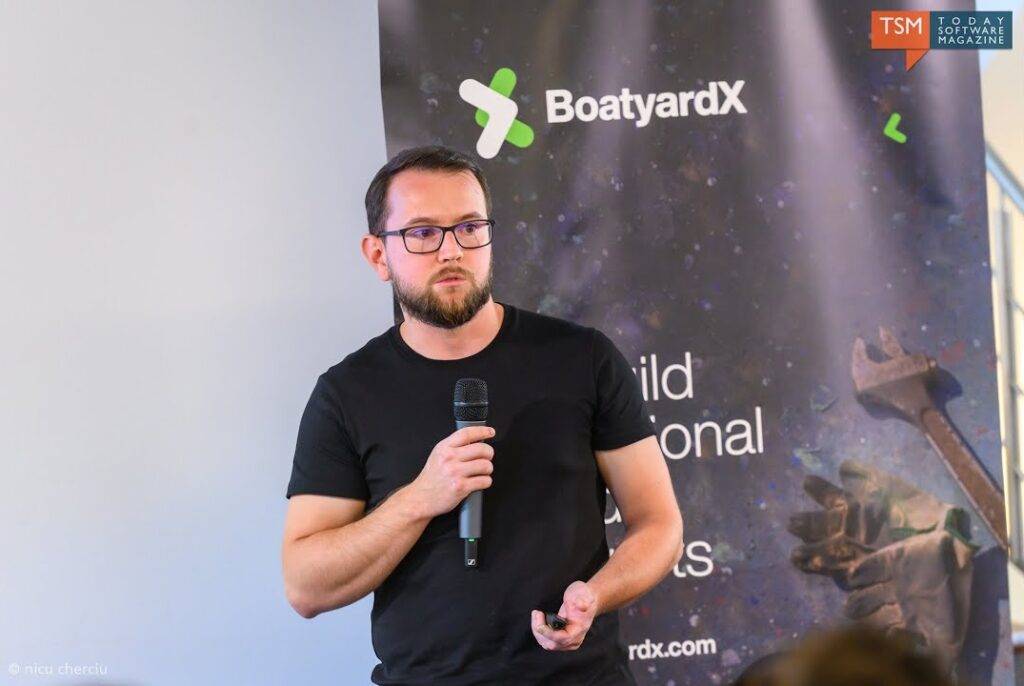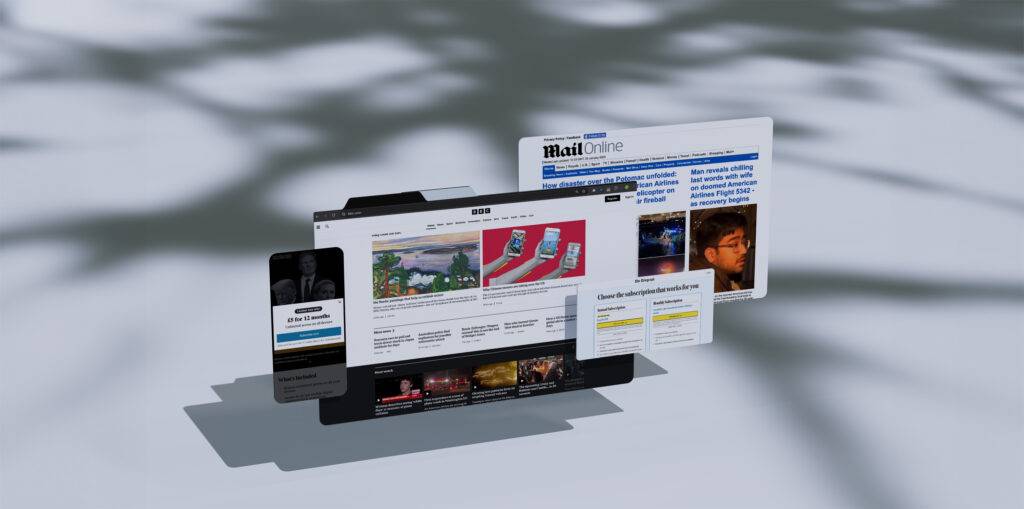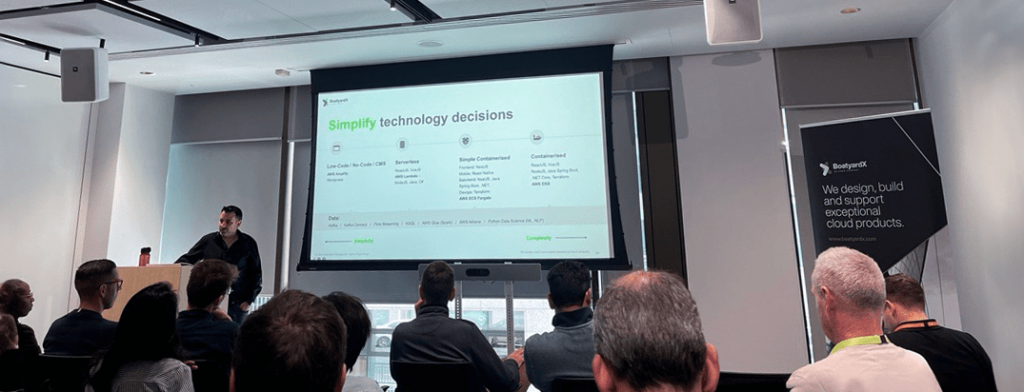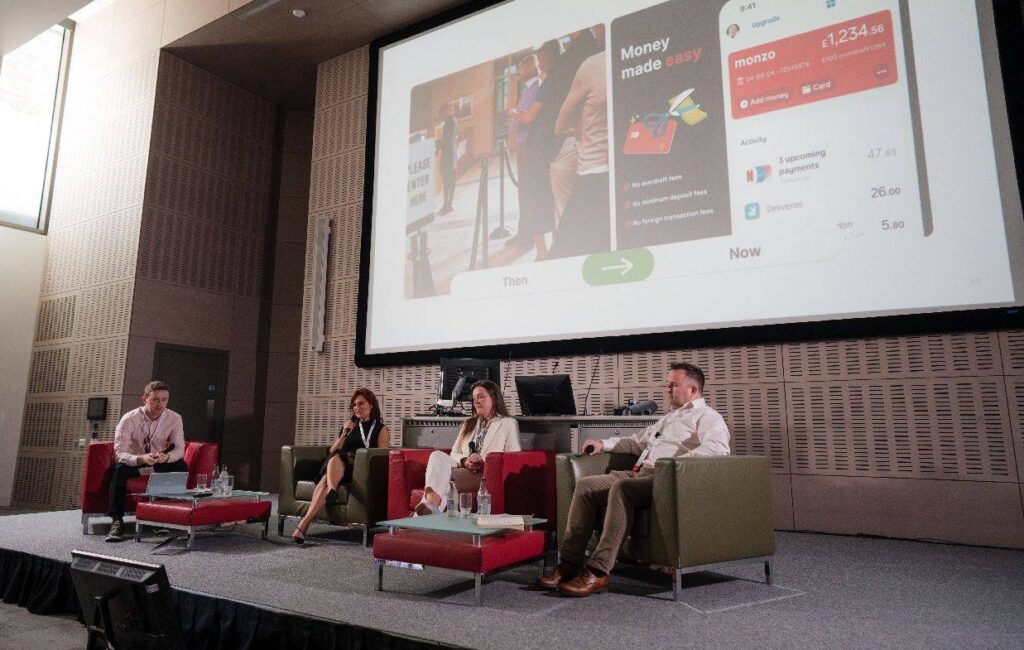How to transform your outdated applications into modern, cloud-native solutions with Azure.
- Robert Drysdale, Director of Engineering at BoatyardX
Why modernise your legacy apps?
Legacy applications are often the backbone of many businesses, but they also pose significant challenges in terms of maintenance, scalability, security, and innovation. Modernising your legacy apps can help you overcome these challenges and unlock new opportunities for growth, efficiency, and customer satisfaction. Some of the benefits of app modernisation include:
- Reducing operational costs and complexity by moving to a cloud-based infrastructure.
- Improving performance, reliability, and availability by leveraging cloud-native features and services
- Enhancing security and compliance by adopting the latest standards and best practices
- Accelerating innovation and agility by enabling faster and more frequent updates and deployments
- Delivering better user experiences by optimizing the app design and functionality for modern devices and platforms
- Help attract and retain engineering talent by creating opportunity to work with modern development stack and offering upskilling paths to existing employees
Azure’s app modernisation tools and how to use them
Azure is Microsoft’s cloud computing platform that offers a comprehensive set of tools and services for app modernisation. You can use Azure to migrate, refactor, rearchitect, or rebuild your legacy apps and transform them into modern, cloud-native solutions. Some of the Azure’s app modernisation tools include:
- Azure Migrate: A service that helps you assess, plan, and execute your migration to Azure. It supports various app types, such as servers, databases, web apps, and virtual desktops.
- Azure App Service: A platform that enables you to build, deploy, and manage web and mobile apps, API apps, and function apps in the cloud. It supports multiple languages, frameworks, and integrations, and offers features such as autoscaling, authentication, and custom domains.
- Azure Kubernetes Service (AKS): A service that simplifies the deployment and management of containerized applications using Kubernetes, the popular open-source orchestration system. It allows you to scale, update, and monitor your apps with ease, and integrates with other Azure services such as Azure DevOps, Azure Monitor, and Azure Security Center.
- Azure DevOps: A platform that provides a unified set of tools for software development and delivery. It includes services such as Azure Repos, Azure Pipelines, Azure Boards, Azure Test Plans, and Azure Artifacts, which enable you to collaborate, code, build, test, and deploy your apps.
To get started with Azure’s app modernisation tools, you can follow these steps:
1️⃣ Define your app modernisation goals and strategy. Identify the business drivers, the technical challenges, and the expected outcomes of your app modernisation project.
2️⃣ Assess your current app portfolio and prioritise your modernisation candidates. Use Azure Migrate to discover and evaluate your existing apps and determine the best modernisation approach for each app.
3️⃣ Choose the right Azure tools and services for your modernisation scenario. Depending on your app type, complexity, and requirements, you can select the most suitable Azure solution for migrating, refactoring, rearchitecting, or rebuilding your app.
4️⃣ Implement your app modernisation plan and monitor your progress. Use Azure DevOps to manage your app development and delivery lifecycle and use Azure Monitor to track your app performance and health.
How to mitigate risk and ensure that app modernisation delivers value
App modernisation can be a complex and challenging process that requires careful planning, execution, and monitoring. Engaging with a trusted IT partner can provide the expertise and support needed to navigate the complexities of modernising applications, ensuring that the chosen approach aligns with CIO’s vision for the organisation’s technology and its business strategy.
Partnerships are particularly beneficial during the initial stages of app modernisation, especially when streamlining the existing application portfolio to improve efficiency and lower the Total Cost of Ownership (TCO). It’s also pragmatic to engage with a partner when reorienting the IT organisation to adopt a product-based model for delivering business capabilities quickly, efficiently, and securely.
Conclusion
In conclusion, app modernisation can help you transform your legacy apps into modern, cloud-native solutions that deliver better value to your business and your customers. By leveraging Azure’s app modernisation tools and services, you can reduce your operational costs and complexity, improve your performance, reliability, and security, accelerate your innovation and agility, and deliver better user experiences. To get started with Azure’s app modernisation tools, you can define your app modernisation goals and strategy, assess your current app portfolio and prioritise your modernisation candidates, choose the right Azure tools and services for your modernisation scenario, and implement your app modernisation plan and monitor your progress.
Partnerships are particularly beneficial during the initial stages of app modernisation, especially when streamlining the existing application portfolio to improve efficiency and lower the Total Cost of Ownership (TCO). It’s also pragmatic to engage with a partner when reorienting the IT organisation to adopt a product-based model for delivering business capabilities quickly, efficiently, and securely.
App modernisation is a complex and strategic process that requires the right partner to support you. As an Azure Expert MSP, we can help you leverage Azure’s app modernisation platform and best practices and ensure that your project aligns with your business goals and delivers value.
Read more tech topics
Modernise smarter, scale faster. BoatyardX helps you cut costs and unlock agility by transforming legacy apps through our DiscoverX process and the AWS 7Rs framework.
AI is reshaping how we work, shop, learn, and solve problems, it's creating experiences that seemed impossible just years ago. But what separates AI that transforms businesses from AI that gathers digital dust?
Cloud migration promises scalability, innovation, and long-term cost efficiency. Beneath the surface, however, many organisations encounter unexpected expenses that can derail timelines and budgets.
In recent years, software architectures have evolved rapidly, reflecting the changing needs of software developers and the business environment.
There’s a common belief in the digital world: paying for something guarantees a better experience. But is this always true?
How convenient would it be to have a quick solution at hand for developing a static web page, a proof-of concept application, a single-page application, or even a complete web app built with microservices?
Building a cloud-based product can be daunting for startups, especially when faced with a plethora of choices, trade-offs, and challenges.
Proud of your product but sense it hasn’t quite hit its stride? UX audits are an essential tool to ensure it hits its full potential.
At Adminovate 2024, Karolina Coates, Head of Design at BoatyardX, joined industry leaders to discuss the evolving landscape of user experience (UX) and fintech innovation.
The BoatyardX DiscoverX workshop is a collaborative, interactive experience where clients have the opportunity to explore product and technology concepts.
In today's fast-paced digital landscape, businesses are continually seeking innovative solutions to manage their infrastructure efficiently – and for good reason.
Within the sphere of modern applications, prioritising user experience has become paramount.
Whether you are a startup or a large corporation, it's likely you will face many of the same challenges in building the first version of a new product or application. We explore some of the critical success factors and lessons learned from supporting a broad range of clients in bringing new products to life.
We live in the times when seamless user experiences (UI/UX) are the cornerstone of digital success, businesses are strategically leveraging the nearshore advantage to bolster their design teams.
Before solution and implementation are merged into the upstream branch, a code review is a crucial stage in the software development cycle to obtain a second viewpoint.
Computer vision has become a significant influence in the remaking of numerous sectors in a time when technological innovation is the driving force.
In today's rapidly evolving digital landscape, the success of a product or service hinges on the user experience (UX) it delivers.
With over four years of experience as a .NET developer under his belt, Petru felt it was time to explore the growing demand for DevOps expertise, specifically in technologies.
WebRTC (Web Real-Time Communication) is an open-source transformative technology that revolutionizes real-time audio, video, and data sharing within web browsers.
What do startup founders and enterprise technology leaders have in common? Nightmare stories about unintended consequences of technology decisions.
Cognitive biases can have a significant impact on the quality and effectiveness of software being developed. How can software developers mitigate this impact?
At a recent Microsoft event speakers and attendees struggled to best describe the significance of AI and its potential impact on enterprise.
More organisations are starting to realise that the cloud is a great enabler for innovation, not just a more efficient way of running IT applications and services.
Skill gaps, high employee turnover and fierce competition for limited talent have only added to the pressure that businesses are facing from inflation. Though it may seem counter intuitive, it’s actually a good time to modernise or even replace applications, because they could be compounding your skills challenges.
Meta has called 2023 ‘a year of efficiency’ and they are far from alone in the corporate world. Many businesses are knuckling down, shedding staff and focussing on the old adage of ‘doing more with less’. Belt tightening is a business initiative again, like the bad old days of 2008.
Factors to consider when deciding whether or not to automate your QA.
At close to 4 years old BoatyardX has, for most of its short life, been a remote-first organisation.
How design helps you validate your product ideas within our Discovery Framework.
Have you ever wondered what it takes to have that genius spark that leads to groundbreaking, brilliant ideas?
This article briefly highlights the challenges faced by many software companies, and elements of the solutions we’ve helped map out with them.
This article briefly highlights the challenges faced by many software companies, and elements of the solutions we’ve helped map out with them.
De-risk your product build by answering fundamental product and technology questions up front
Often entrepreneurs skip brand development because of budget limitations or lack of available skillset. A solid brand strategy is, however, the foundation of a successful venture which stands out from the crowd.
An active player on the IT scene, BoatyardX was featured by Today Software Magazine (RO) in tech related topics as a subject matter expert.
When technology isn’t your core business it makes sense to go to an external partner such as BoatyardX. Discover how this approach works for Toronto-based Global Solutions Team.
We were recently interviewed by a new Software Insider website using a Reporter BOT, and it didn't go great! Sometimes #articialintelligence isn't as smart as we'd expect! See what you think.
Irish technology company BoatyardX delivers a compelling case for moving to the cloud to ensure the viability of your operations for the future.
As a growing start up, it’s important not to lose sight of the security and controls required on the IT systems that underpin the business. See how a recent Pen Test has resulted in significant cost savings at BoatyardX.
Pushing a new product live and then helping to demonstrate to early beta customers is a fantastic experience for a software development team.
BoatyardX’s approach to the cloud uses scalable, flexible Kubernetes technology. For businesses undergoing digital transforming, it is the wisest strategy.
Covid-19 represents both a driver and an opportunity for businesses to use digital innovation and build new products and applications more rapidly.








































